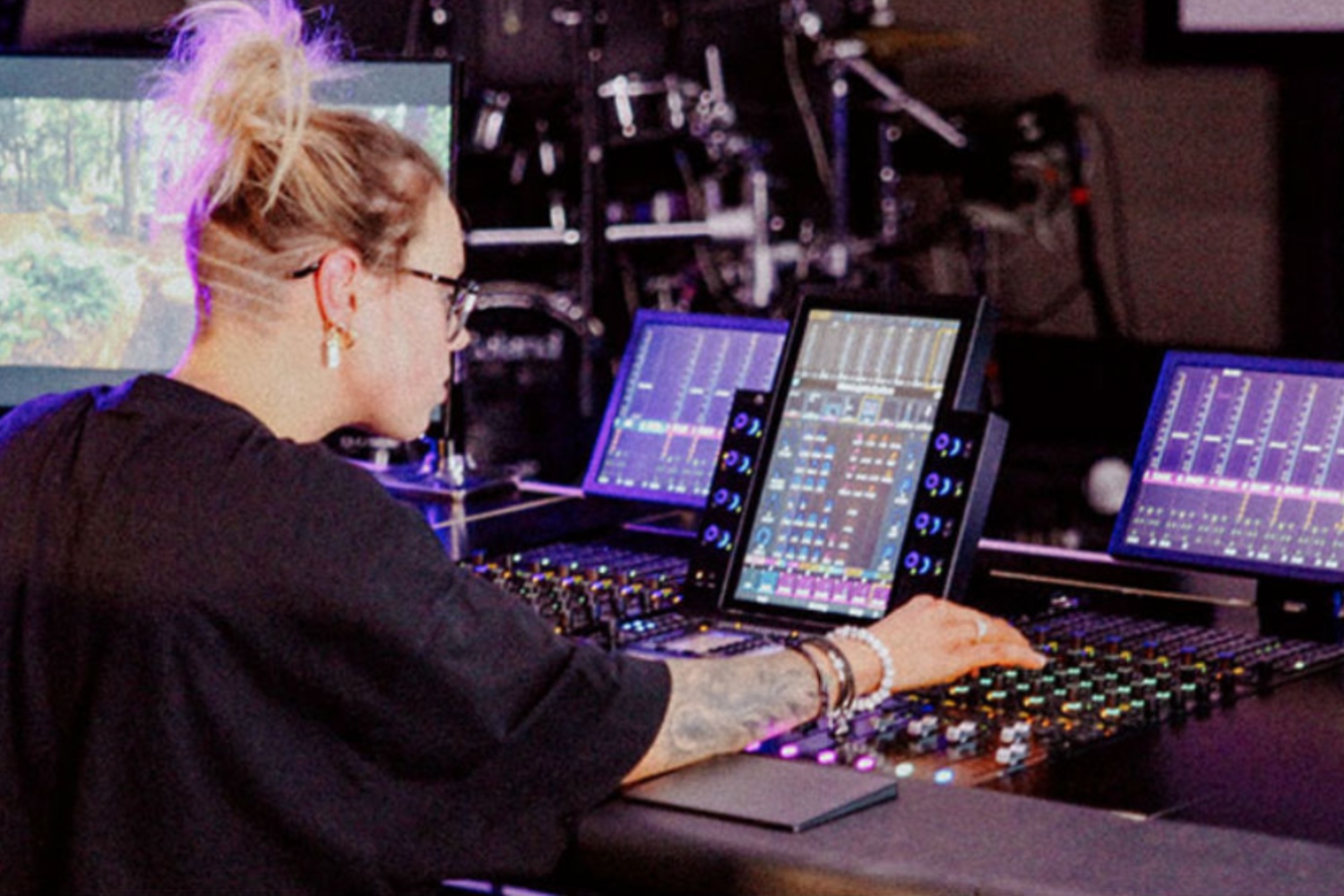Find out how Collarts utilises remote monitoring in audio engineering in part eight of our ongoing content series.
Whether using a tried and true foldback wedge or a more sophisticated in-ear monitoring system (or IEM for those who enjoy a good acronym), the importance of high quality on stage monitoring cannot be underestimated.
As a topic, it’s one that only reveals its true importance, the longer you spend in the live domain – a subtle but vital technical consideration, with the ability to single-handedly make or break a performance.
For the onstage talent, the monitors serve as an important lifeline amidst the uncontrolled cacophony that usually accompanies raw stage sound in the open air, providing vital pitch, timing and cue/mix information and giving the artist exactly what they require in order to draw out the very best performance possible.
Whilst many a smaller live venue or event will require one engineer to be responsible for both front-of house (or FOH) and monitor mixing duties, larger venues and events will often have two independent, dedicated setups for these tasks, with separate consoles for each and with the responsibilities being divided between two engineers.
Presenting a vastly different workflow and divergent set of demands compared to front-of-house mixing duties, the importance of learning to distinguish between monitors and FOH mixing protocols is paramount for any budding audio engineer, a fact that Collarts only knows too well.
Just as they have done with other vital components within the Live sector, Collarts have also integrated world-class monitoring training into the their Audio course curriculum also, as department head Jason Torrens explains: “What we are teaching is the workflows—preparing our students for the very unique technical considerations that come with mixing for monitors.
“For monitor engineers, they will usually have to pull a number of mixes in the same amount of time that a front of house engineer might have to pull one, so our students need to have a thorough enough understanding of these workflows to accommodate this kind of increased workload, side of stage”
Like many of the aspects of controlling the sound parameters of a live event, monitor mixing itself is very much a “hand-on” affair, with fingers on faders at all times, being ready to make an adjustment to a musicians monitor mix in an instant.
With the obvious challenges 2020 has presented with a vast majority of face-to-face learning switched to being done remotely, this has presented yet another set of unique challenges for the Audio department at Collarts.
“There is no doubt that mixing for monitors is one of the most practical and hands-on subsections, in terms of day to day workflow,” remarks course co-ordinator Dylan Mitrovich, before adding, “It’s also one that benefits the most from having a thorough technical and theoretical understanding of why these workflows even exist in the first place.
“It’s one of those topics that is just as much about managing personalities, working efficiently and instilling a sense of confidence in a performer as it is about hand-on technical skills like tuning foldback monitors, so it pays to empower students with a thorough grounding on the theoretical side as well as the practical. Showing them exactly why this is important and how this directly translates to other technical aspects like signal flow, monitor mixes and in-ear/wireless solutions.”
Thanks to some truly innovative control and streaming technologies (the likes of which have given Collarts Audio students an unprecedented ability to control on-campus digital mixing consoles from home), Live Monitoring, like the Live Sound and Post-Production units, is yet another area in which Collarts has made some major advancements into the remote learning space, opening up the unit to all kinds of interesting and cutting edge workflows.
“The beauty of working in this industry, especially within the last 5-10 years is the astonishing leaps digital consoles have made, with the ability to control more or less any element imaginable from an iPad, PC or other compatible device. This opens up vast new capabilities for learning, alleviating the need to be cramped round a physical console (whilst adhering to social distancing measures).”
The physical console Dylan is referring to in this instance is the Behringer X32, the ubiquitous live desk and considered by many to be one of the most powerful consoles out there when it comes to remote applications.
“The control and networking protocols on the X32 are great,” he says. “There are just so many options and with so much flexibility on offer, it really gave us a lot to work with in terms of finding solutions to allow for remote operation.
“Beaming in to control the console remotely also gives students the opportunity to understand this type of setup on an intimate level, getting to dive into the Behringer X32’s remote control protocol more deeply and putting its feature set though its paces in a manner which might have taken years if you were to learn it organically, in the field.”
Discover more about studying Audio Engineering through Collarts today.
